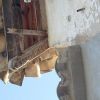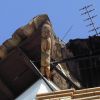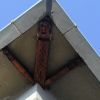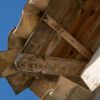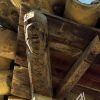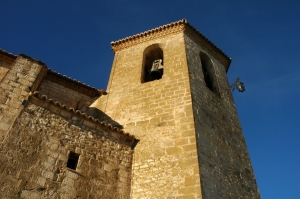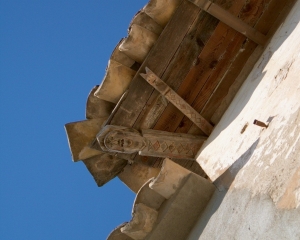Tales are told in Salas Altas of a witch that once lived here called Gracia la Nadala. Her power was such that she presented herself to the devil with another known witch from Pozán de Vero; Dominica la Coja. Together with other witches they would meet at midnight on Friday on the hill known as the Peñón de Güera to plan their villainy; to give the evil eye to a child, to curse animals, to annoy the bride and bridegroom on their wedding night and other mischief.
Frightful of their tremendous powers, the people of Somontano tried to protect themselves with magic elements; solar symbols, crosses, door knockers and crude figures carved from wood that were placed in the eaves to prevent evil entering the house.
The houses of Cosme, Pedrochil and Mateu all have carved images on their eaves, known here as espantabrujas which translates as a “witch scarer.” They are roughly carved figures that resemble faces or human figures. Placing them at the top of the house and close to access to the attic was a way to protect it from attacks from witches and other demons.
The name of the infamous Gracias la Nadala, a powerful witch, appears on the transcript of a trial against Dominica la Coja, a confessed witch from Pozán de Vero. It gives their testimony to having killed various living beings after entering houses with the help of the Devil.
The rock known as the Peñón de Güera, where witches held their covens, can be still be seen on the road from Salas Altas to Buera. Here they would turn themselves into black cats and goats with the help of magic potions and evil ointments.



